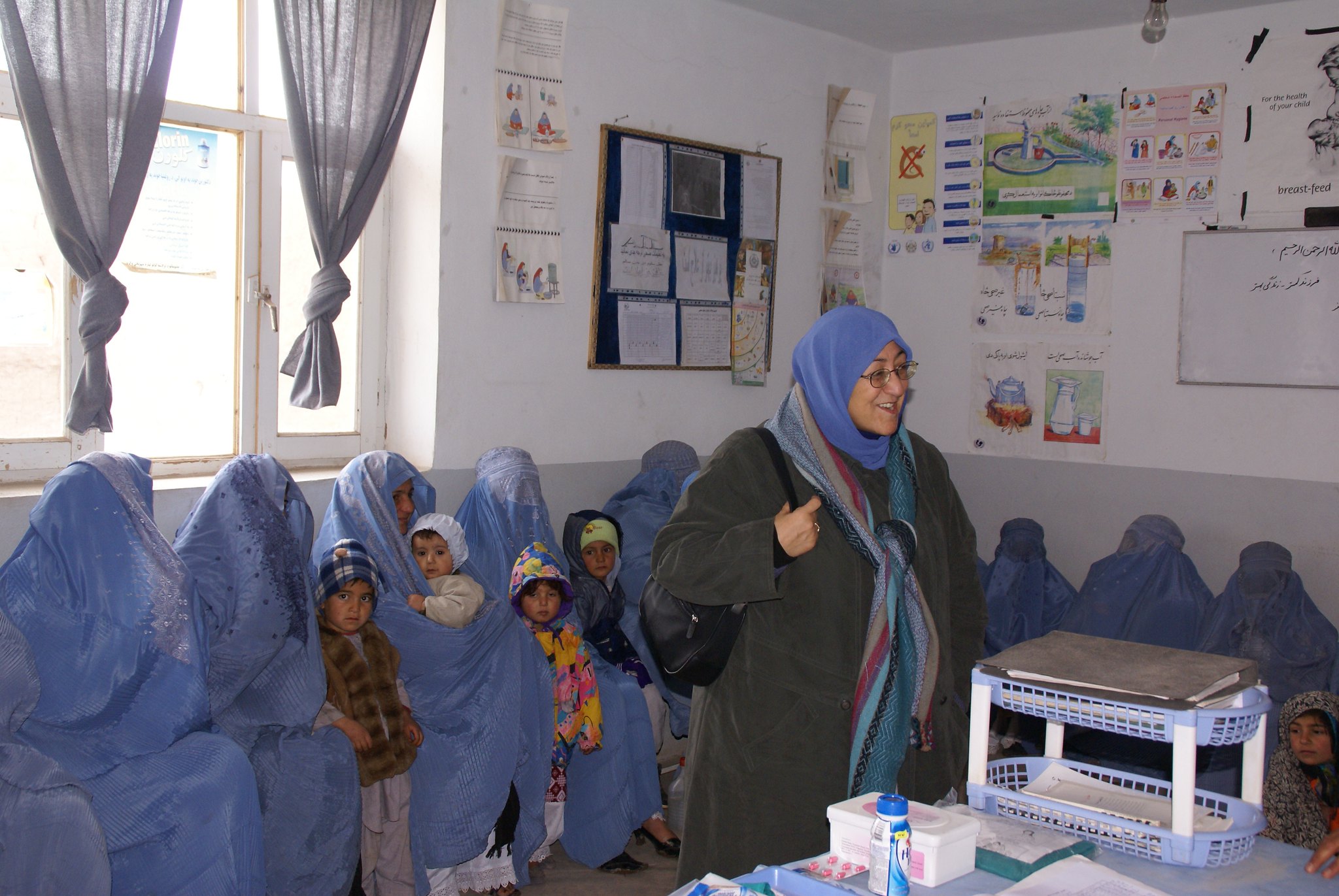In her 2001 radio address, Laura Bush grieved that “our hearts break for the women and children of Afghanistan.” Bush was joined by Hollywood celebrities, among them Kathy Bates, Geena Davis and Lily Tomlin and the Feminist Majority Foundation—all of whom were disheartened by the plight of Afghan women living under the Taliban and determined to save them from its tyranny. Grassroots activists began rallying for George W. Bush’s Operation Enduring Freedom, imagining a day when Afghan women pilots could fly American F-16s. For Americans, particularly alarming was the Taliban’s policy of forcing women to veil themselves by wearing full-body burqas—so much so that following its downfall, the New York Times cheered that Afghan women could now wear burqas “out of choice” rather than coercion.
America’s military offensives against the Taliban regime began in October 2001, toppling its government by December of 2001. While all Afghans shared common grievances against the Taliban, America’s involvement was viewed as a success, particularly for women. Yet, the narrow focus on the conditions of Afghan women under the Taliban regime ignores their suffering caused by the power struggle between the United States and the Soviet Union during the Cold War. Understanding the dire conditions of Afghan women under the Taliban necessitates an analysis of America’s militarization of Afghanistan and its detrimental disruption of the country’s cultural and social institutions. The assertion that women in Afghanistan were only oppressed by the Taliban grossly overlooks the active role America played in creating the conditions conducive to their suffering.
In 1979, the Soviet Union invaded Afghanistan. In response, U.S. President Jimmy Carter approved military aid for Afghan resistance fighters—also known as mujahideen. President Ronald Reagan further armed the mujahideen, spending more than $3 billion on the most extremist Afghan factions. America’s ally, the mujahideen, became the Taliban that took control of Afghanistan in 1995, following the Soviet Union’s withdrawal in 1989. While the women of Afghanistan suffered due to war and conflict, the United States propped up Gulbuddin Hekmatyar. One of America’s closest friends during the Afghan resistance against the Soviet invasion, Hekmatyar was a notorious mujahideen leader, known for throwing acid in the faces of Afghan women for refusing to wear the burqa.
Prior to the Soviet invasion of Afghanistan, the country had various political and religious groups, from secular nationalists to religious extremists. Yet, the United States channeled most of its military aid to help the most vicious factions in the Afghan resistance—because “fanatics fight better” as a CIA official in Pakistan put it. By the time the Taliban had wrested control of the government in 1995, nearly 2 million Afghans had been killed and 6 million others displaced as refugees, most of whom were women and children. During the Soviet invasion, Afghanistan’s infant and maternal mortality rates further increased due to war and violence.
Having created a monster, the United States was able to topple the Taliban regime by siding with the Northern Alliance, an Afghan military front of warlords who opposed the Taliban. The Northern Alliance’s reprehensible record of raping girls and women “from seven to 70” was often worse than that of the Taliban, according to the Revolutionary Association of the Women of Afghanistan. On the contrary, the Taliban’s policy of strict surveillance and disarmament of the Afghan population had enabled women in rural Afghanistan to move outside their homes without the fear of being raped.
Washington’s feminists were particularly alarmed by the Taliban’s banning of schools for girls and women. While the Taliban’s ban was outrageous, critics in the U.S. failed to examine its true consequences. More than half of Afghanistan’s female population lived in rural areas where schools did not exist in the first place. In fact, 90% of Afghan women were illiterate compared to 60% of men. As such, the Taliban did not alter much in rural Afghanistan.
Before the Taliban’s repressive rule in Afghanistan, women were faced with starvation, drought and widespread violence. Yet, in the coterie of American feminists, the symbol of the burqa loomed especially large. Images of urban Afghan women in skirts and shorts began to circulate in the United States, and generally in the West, drawing nostalgia for a time when Afghan women did not have to wear the burqa, and were, hence, less oppressed. Such a narrative is at best misleading and at worst, woefully wrong. It fails to depict the lives of the larger majority of Afghan women who never wore skirts and shorts. More importantly, such a focus on the burqa neglects the years of oppression and violence Afghan women had to face as a consequence of America’s unchecked militarization of Afghanistan. It is remarkable, therefore, that the forced wearing of the veil drew more outrage than endless bombings, extreme poverty and Afghanistan’s cultural and social decay due to war.
As the United States plans to withdraw its troops from Afghanistan, Fatou Bensouda, Chief Prosecutor at the International Criminal Court, released a report in 2016, which raised concerns over the rape of Afghan women, and ill-treatment and torture of Afghan civilians by American soldiers and CIA operatives. In the report, Bensouda notes that members of the US armed forces were involved in “torture, cruel treatment” and “outrages upon personal dignity on the territory of Afghanistan.” However, with recent American peace negotiations with the Taliban, mainstream news headlines, such as “women here are very, very worried” and “Afghan women fear their hard-won freedom is in jeopardy as Taliban talks resume,” implicitly suggest that the United States has been the protector of women in Afghanistan. The understanding that women will suffer only when the Taliban returns overlooks America’s unending military presence in Afghanistan, which has disrupted the social cohesion necessary for Afghan women to thrive and live freely.
Photo: Image via Direct Relief (Flickr)
